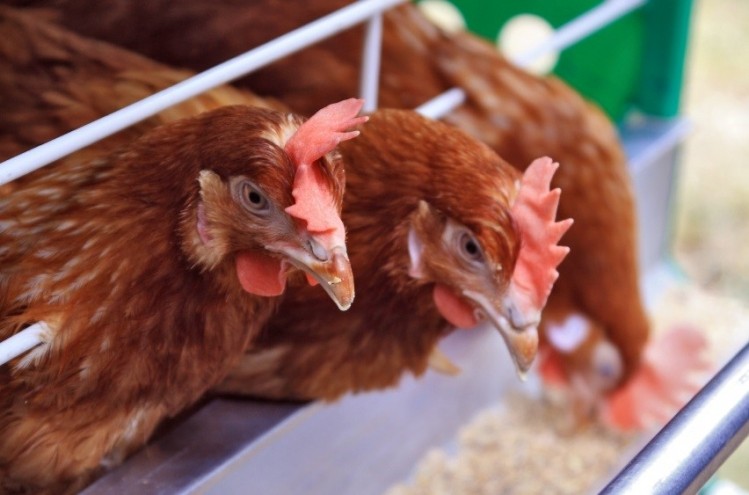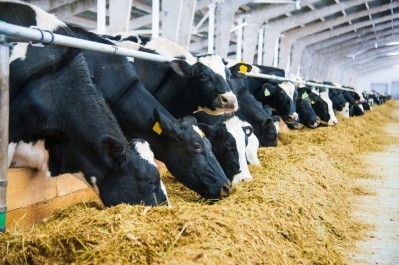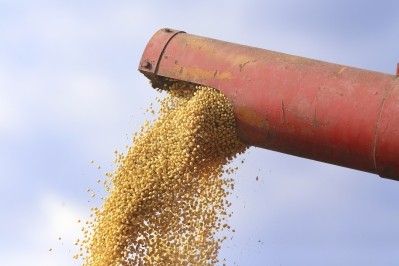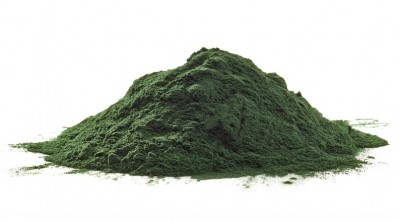Could defatted microalgae replace corn and soybean meal for swine and poultry?

According to an extensive review in the Journal of Animal Science, the Cornell scientists report that all three animal types are able to tolerate the incorporation of microalgal biomass into their diets at a level of 7.5%.
The review appears to support the global potential of, “using the defatted microalgal biomass as a new feed ingredient in offsetting the biofuel production cost, reducing the dependence on staple crops such as corn and soybeans, decreasing greenhouse gas production of animal agriculture, and developing health value-added animal products”, they wrote.
Potential, but…
Interest in using microalgae as feed for food-producing animals has been reinvigorated by recent exploration of their use in biofuel production, explained the Cornell scientists. Microalgae represent the third generation in biofuel production, with corn and other crops the first generation, and woody crops the second generation.
“[Microalgae] demonstrate rapid growth rate, rich oil content, strong ability to sequester CO2, and rapid conversion of CO2 into a reusable biomass such as methane or hydrogen,” they added. “Because the defatted microalgal biomass contains significant amounts of protein, carbohydrates, and other nutrients after the oil extraction, it can be an excellent replacement of conventional ingredients in animal diets.
“Therefore, the fuel and feed dual application of microalgae stands as a propitious mediator to reshape the junction between intensifying animal agriculture and our unmet needs for global renewable energy, food, and environmental sustainability.”
The Cornell scientists used four types of full-fat and defatted microalgal biomass (Staurosira spp.) from the biofuel production research of Hawaii-based Cellana. The biomass contained between 14 and 38% crude protein, and between 1.5% and 9.3% crude fat, they noted.
The results showed that, based on growth performance, egg production and quality, biochemical indicators, and/or fecal samples, weanling pigs, broiler chicks, and laying hens were able to tolerate the incorporation of microalgal biomass into their diets at a level of 7.5%.
Soybean bean meal replacement
According to data from the United Soybean Board, about 22 million tons of soybean meal are used annually by the US broiler, egg, and swine industries.
“With an anticipated replacement of 20 to 50% of SBM by microalgae in the diets, it would spare 4.4 to 11 million t of SBM annually for human consumption,” wrote the researchers.
Commenting independently on the study, Becky Timmons, global technical director for Alltech Algae, told FeedNavigator that scientists believe there could be up to 800,000 different species of algae, each with different characteristics and nutrient profiles. Some are grown photosynthetically while others are grown under controlled system fermentations, she added.
“It is difficult to comment or make a blanket statement on ‘algae’ due to the very broad range of species and technologies,” said Timmons. “I would not question any of their data at all, but could maybe comment on the fact that this was ‘laboratory’ work for the most part so would lead me to ask about the commercial status of the project as well as the potential regulatory status.”
Source: Journal of Animal Science
2014, Volume 92, Pages 1306-1314, doi:10.2527/jas.2013-7250
“Potential of defatted microalgae from the biofuel industry as an ingredient to replace corn and soybean meal in swine and poultry diets”
Authors: S. Gatrell, K. Lum, J. Kim, X. G. Lei
















